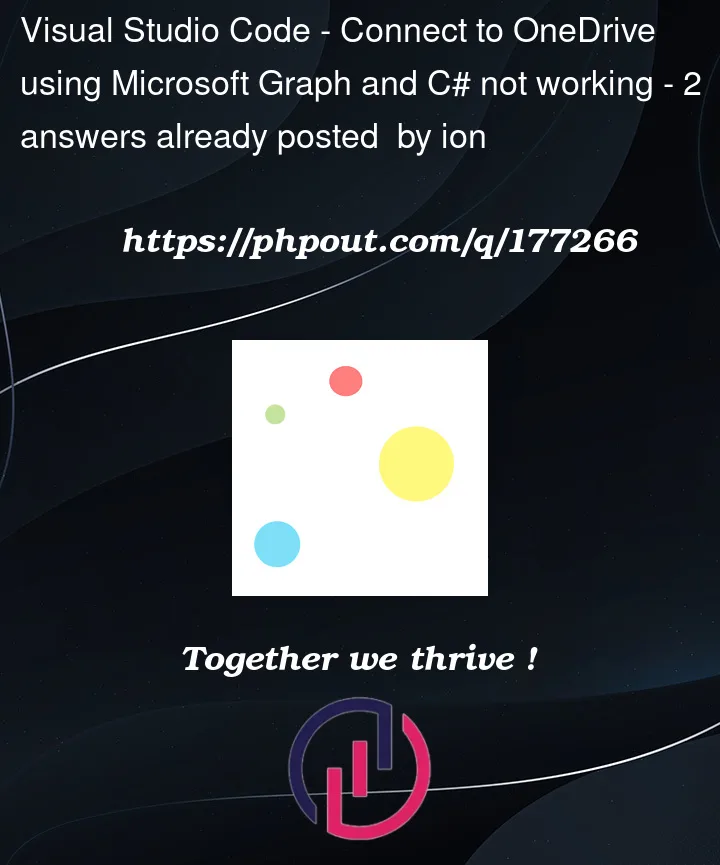I was trying to create a very simple app to connect to my OneDrive and receive a list of the various files that I have hosted on OneDrive.
This is the code:
string clientId = "My client Id";
string clientSecret = "The secret id value";
string tenantId = "My tennant id";
var clientSecretCredential = new ClientSecretCredential(tenantId, clientId, clientSecret);
var graphClient = new GraphServiceClient(clientSecretCredential);
var driveItems = await graphClient.Me.Drive.Root.Children.Request().GetAsync();
// Display the names of all items in the list
foreach (var item in driveItems)
{
Console.WriteLine(item.Name);
}
The problem is that apparently graphClient.Me.Drive does not contain a Root definition (at least that’s what Visual Studio tells me).
I am using Microsoft.Graph v5.11 and Azure.Identity v1.9




2
Answers
One possible reason for this issue is a version mismatch between the Microsoft.Graph library and the Microsoft.Graph.Core library. In some versions, the property Root may not be directly accessible. Instead, you can try using the DriveItemRequestBuilder to retrieve the root drive item explicitly. Here’s an updated version of your code:
In this version, driveItems is retrieved using the Children property of the Root drive item. The CurrentPage property is used to iterate over the results and display the names of the items.
Make sure you have the latest versions of both the Microsoft.Graph and Azure.Identity packages installed. You can check for updates using NuGet Package Manager or by running the following command in the Package Manager Console:
If the issue persists, you may want to consider checking the documentation or sample code provided by Microsoft for connecting to OneDrive using the Microsoft Graph API with the specific version of the libraries you are using.
You are now using
Microsoft.Graph v5.11which is different from V4.x and in V5 there’s no.Request().In the meantime, you are using client credential flow
new ClientSecretCredential, so you can’t use.Mebut have to use.Users["your_user_id"]. Because you don’t sign in first, so you have to give a user id manually. By the way, since you are using client credential flow, you have to set the scope asvar scopes = new[] { "https://graph.microsoft.com/.default" };. This requires you to consent application type of api permission:Then you code based on V5.11 should be like:
Related link: https://github.com/microsoftgraph/msgraph-sdk-dotnet/blob/feature/5.0/docs/upgrade-to-v5.md#drive-item-paths